Table of Contents
In the vast and dynamic food and beverage industry, glass packaging bottle closures—often overlooked—play a surprisingly crucial role. While they may seem like a minor component, closures represent a multi-billion-dollar global market. These small yet essential elements ensure product integrity, enhance user convenience, and even contribute to brand identity.
From carbonated drinks to pharmaceuticals, closures serve as the first line of defense against contamination, leakage, and spoilage. But how much do we really know about them? What types exist, and how do they function in different applications? This guide explores the fundamentals of closures, their types, materials, and emerging trends in the packaging industry.
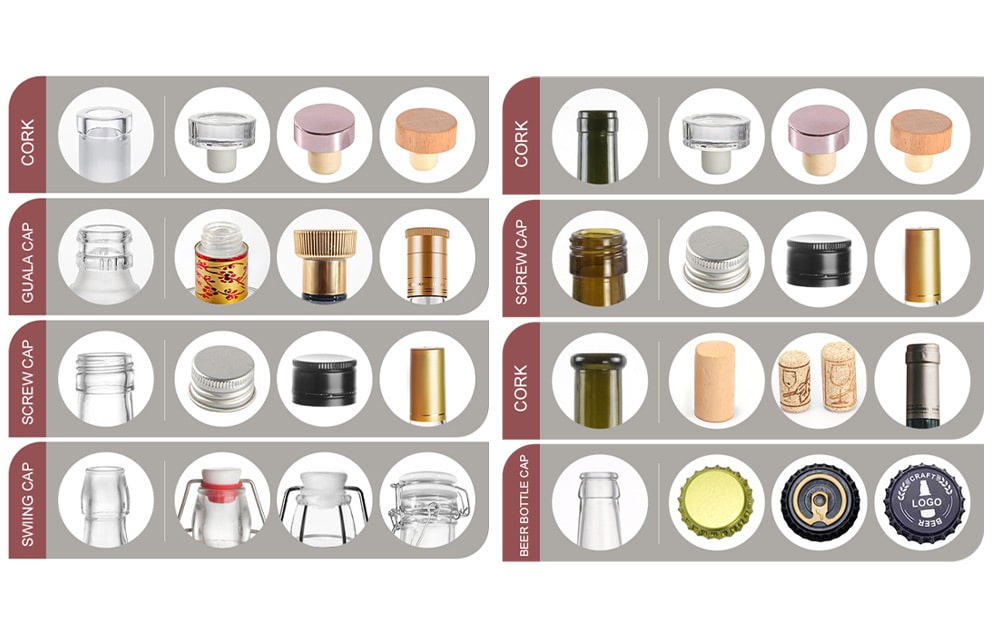
What Are Bottle Closures?
A closure is a sealing mechanism designed to secure containers such as glass bottles, packaging jars, jugs, or tubes. It ensures that the contents remain protected until the user opens the package. Closures come in various forms—screw caps, crown caps, flip-top caps, corks, and more—each tailored to specific packaging needs.
Key Functions of Closures
- Secure Sealing- Prevents unwanted opening, leakage, or tampering.
- Preservation- Acts as a barrier against oxygen, moisture, dust, and microbes.
- Product Safety- amper-evident designs ensure consumer protection.
- Resealability- Allows for multiple uses (e.g., sports drink bottles).
- Controlled Dispensing- Enables precise pouring or single-use access (e.g., condiment packaging bottles).
- User Convenience- Easy-to-open mechanisms for children, elderly, or on-the-go consumers.
Given these critical roles, selecting the right closure is vital for product shelf life, safety, and consumer satisfaction.
Types of Closures
Closures vary widely depending on the container type, product requirements, and industry standards. Below are the most common categories:
1. Screw Caps
Screw caps are among the most widely used closures, especially for beverages, pharmaceuticals, and personal care products. They feature internal threading that allows them to twist on and off easily.
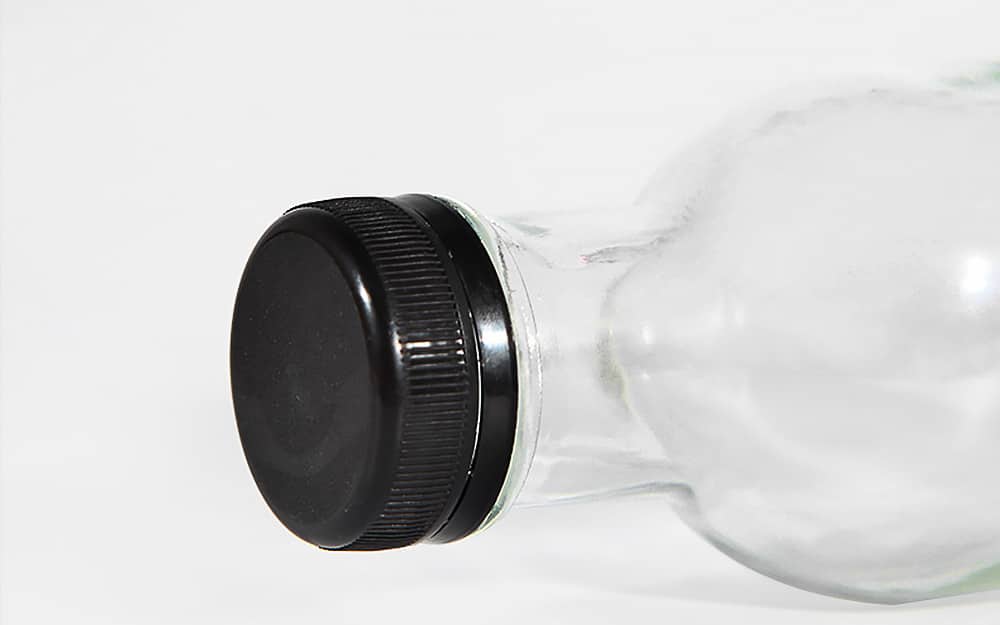
Variations of Screw Caps:
Single-Piece Caps – Made from a single material (usually plastic) with no inner liner. Sealing relies on a folded edge or an inner plug.
Two-Piece Caps – Include a soft inner liner (often foam or pulp-based) that compresses against the bottle neck for an airtight seal.
Child-Resistant (CR) Caps – Require a specific motion (push-and-turn) to open, commonly used for medicines and chemicals.
Tamper-Evident Caps – Feature a breakable band that indicates if the product has been opened.
Common Applications:
Glass water bottles, glass juice containers, glass sauce bottles, medicine glass bottles, and condiment packaging.
2. Crown Caps
Crown caps, primarily used for beer and some soda bottles, are made of metal with a crimped edge. They typically have 21 serrations and a lined interior (often plastic or cork) to prevent direct contact between the beverage and metal.
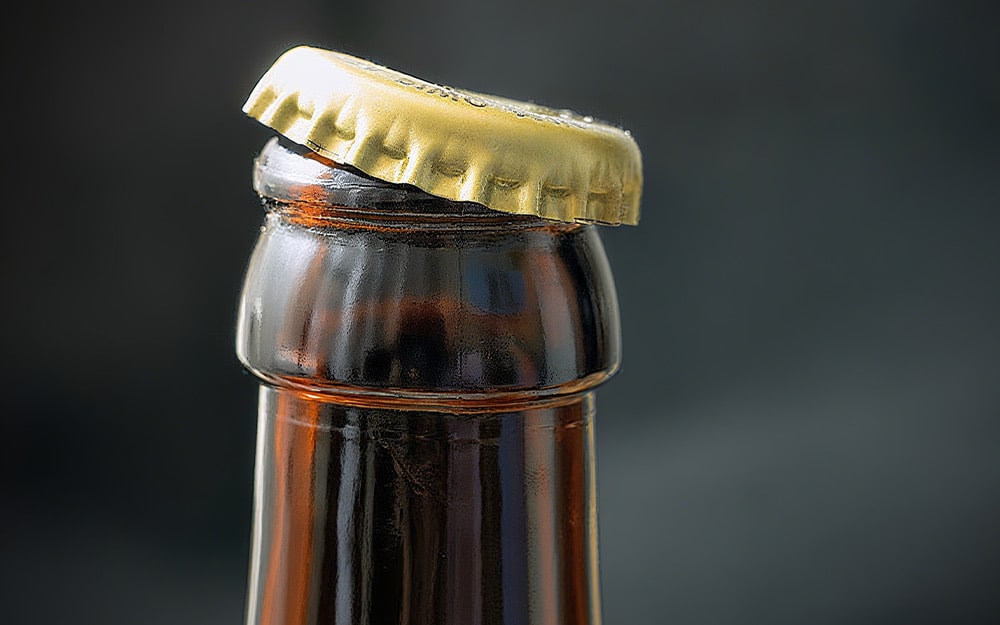
Key Features:
- Requires a bottle opener for removal.
- Provides an airtight seal, crucial for carbonated drinks.
- Often used for single-use packaging.
Modern Innovations: Some crown caps now come with twist-off designs for convenience.
3. Flip-Top Caps
Flip-top closures combine functionality with ease of use, making them popular in food, beverage, and personal care industries.
Types of Flip-Top Caps:
Snap-On Caps – Use a thin metal bracket to hold a plastic or ceramic stopper in place. Historically used for carbonated drinks before crown caps became standard.
Plastic Flip-Top Caps – Feature a hinged lid that snaps open and shut. Often seen on sports drink bottles, ketchup, and shampoo containers.
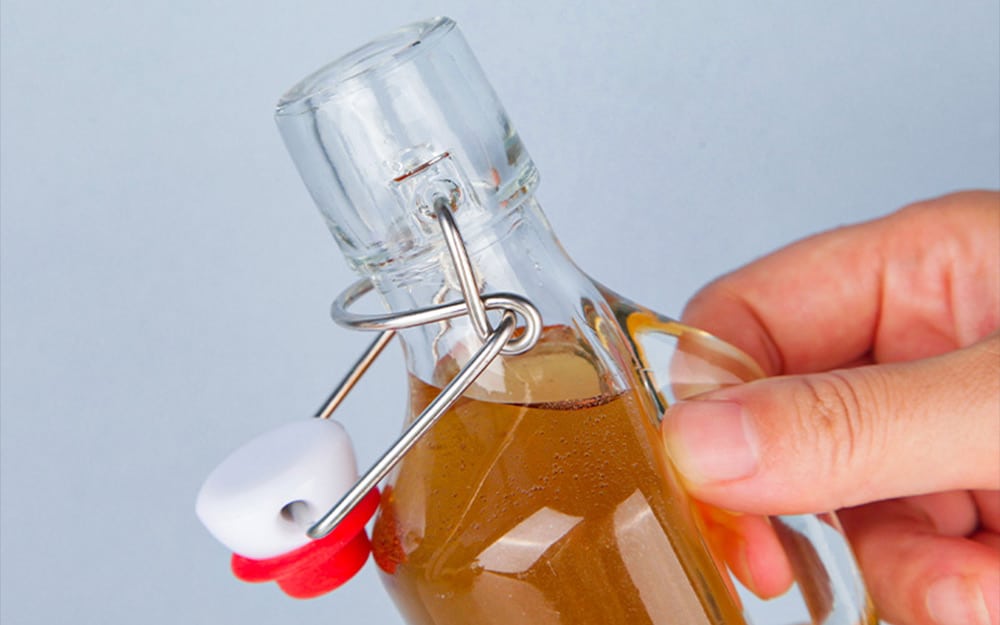
Advantages:
- Reusable and leak-resistant.
- One-handed operation for convenience.
4. Corks
Corks, traditionally made from cork oak bark, are primarily used in wine bottles. They provide an airtight seal while allowing minimal oxygen exchange, which is essential for wine aging.
Modern Alternatives:
Synthetic Corks – Made from plastic or composite materials to mimic natural cork.
Screw Caps for Wine – Increasingly used for premium wines due to consistency and lack of cork taint risk.
Sustainability Note: Natural cork is biodegradable and renewable, making it an eco-friendly choice.
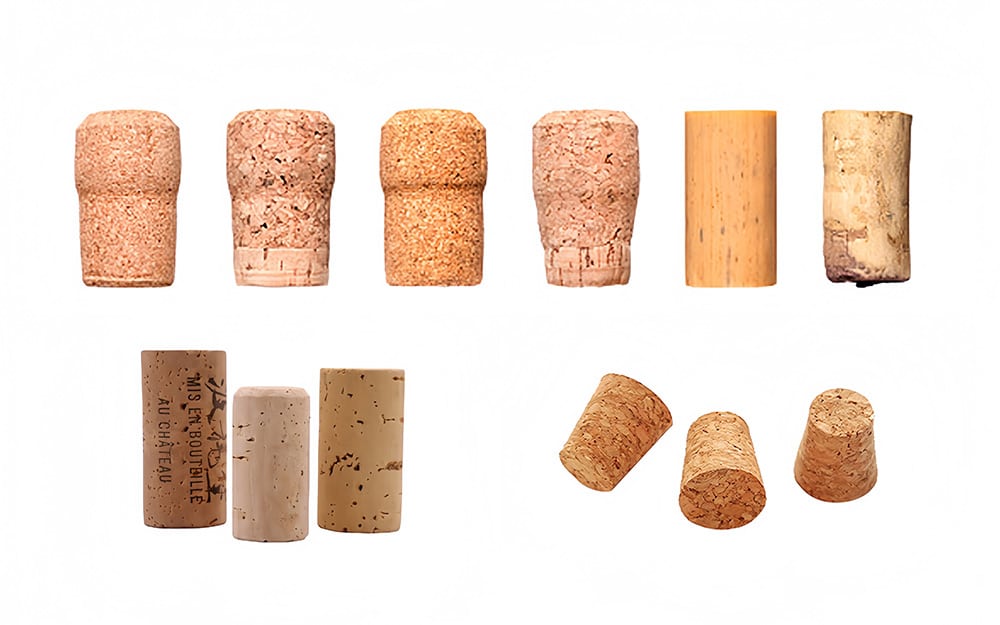
Materials Used in Closures
Closures are manufactured from various materials, each offering distinct advantages:
- Plastic (PP, HDPE, LDPE)- Lightweight, cost-effective, and customizable. Common in screw caps and flip-tops.
- Metal (Aluminum, Steel)- Durable and tamper-resistant. Used in crown caps and aerosol seals.
- Cork- Sustainable and ideal for wine.
- Glass- Used in premium perfume and cosmetic stoppers.
- Silicone- Flexible and heat-resistant, often used in baby food jars.
Manufacturing Processes and Quality Control
A. Plastic CT (continuous-thread) caps for PET/glass
Process: Rotary Compression Molding (RCM) or Injection Molding (IM). IM is flexible for complex features (e.g., hinged TE bands) and small runs.
Materials: PP (most common), HDPE (tougher at low T), sometimes additives for slip/antistat.
Liners:
Compression-inserted TPE/EVA for CSD/water.
Foamed PE (EPE) for many still beverages.
Induction foil (paper/foam + aluminum + heat-seal) for tamper evidence & hermetic seal on glass jars.
What matters: resin MFI/viscosity window, compression head temperature & dwell, thread gauge (e.g., PCO 1810/1881, GPI 400 finishes), TE-band bridge count/thickness.
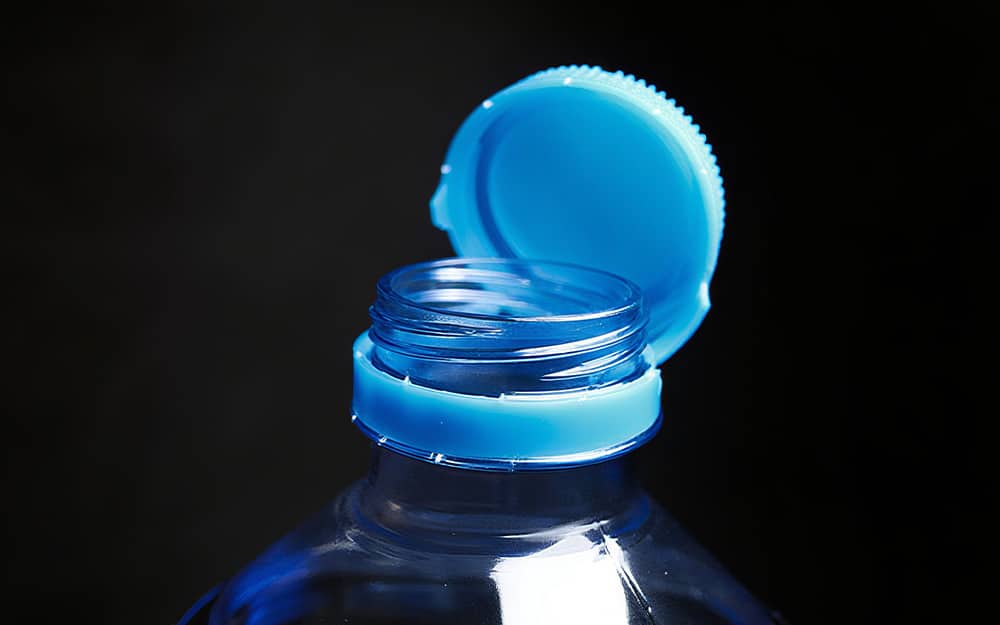
B. ROPP aluminum closures (wine/spirits/oils)
Process: shell stamping → internal lacquer → liner insertion (EPE, Saranex-type barrier) → pilfer-band perforation.
At the filler, a roll-on head forms threads to the glass finish—so glass-neck accuracy is critical.
What matters: shell wall thickness & roundness, lacquer cure, liner density/shore hardness, pilfer-band bridge uniformity, capper roll height & pressure.
C. Lug / “Twist-Off” tinplate caps (food jars: honey, sauces)
Process: stamping + plastisol (or PVC-free) gasket lining + tunnel cure.
Function: steam-vacuum or hot-fill creates vacuum; the button gives a consumer pop.
What matters: bead height/width, cure (gelation), button sensitivity, corrosion resistance (salt-spray).
D. Crown caps (beer)
Process: tinplate shell stamping + liner compound (PVC-free SBR/EVA or PVC).
What matters: shell hardness, curl height, liner compression set, pasteurization survival (PU).
E. Cork & T-top (spirits/wine)
Natural cork (punched parallel to the growth ring) → highest elasticity; agglomerated/micro-agglomerated → better consistency.
T-top = wood/plastic head + (natural/synthetic) cork core; bonding and core diameter tolerances determine the insertion/extraction force curve.
Quality control measures include:
Leak testing using vacuum chambers or pressure decay methods
Torque testing to verify proper opening resistance (typically 8-12 inch-pounds for beverage caps)
Liner integrity checks through dye penetration tests
Carbonation retention testing for beverage closures over 120 days
Migration testing to ensure no harmful substances transfer into products
Regulatory Compliance and Industry Standards
Closures must meet stringent international regulations:
FDA 21 CFR for food contact materials in the US
EU 10/2011 for plastic materials in contact with food
ISO 9001 quality management certification
BPF/BCMP guidelines for pharmaceutical closures
For alcoholic beverages, closures must maintain seal integrity at varying alcohol percentages. Child-resistant packaging follows ISO 8317 standards, while tamper-evident features comply with ISO 17712. Recent EU Single-Use Plastics Directive requirements have driven innovation in tethered cap designs for beverage bottles.
Conclusion
Though small, closures are a powerhouse of innovation in the packaging industry. From preserving product freshness to enhancing sustainability, they play a pivotal role in consumer satisfaction and brand success. As technology advances, we can expect even smarter, greener, and more functional closures to emerge—bridging the gap between practicality and cutting-edge design.
Next time you open a bottle, take a moment to appreciate the engineering behind that tiny cap—it’s doing much more than you think!

